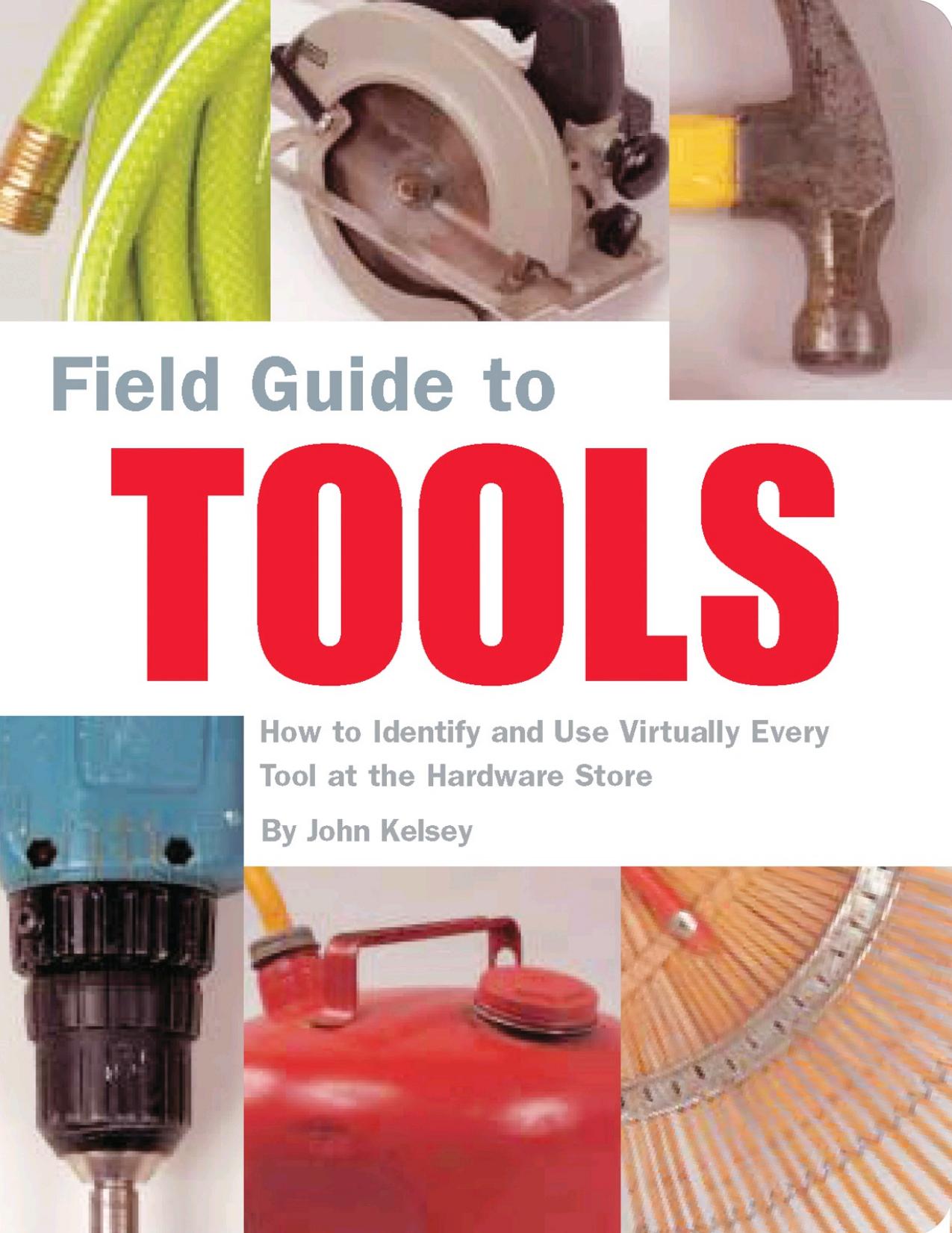Field Guide to Tools by John Kelsey

Author:John Kelsey [Kelsey, John]
Language: eng
Format: epub, pdf
ISBN: 978-1-59474-847-9
Publisher: Penguin Random House LLC (Publisher Services)
Published: 2015-05-04T16:00:00+00:00
Tool-Kit Minimum:
Invaluable whenever you want to lift one corner of the freezer or the grand piano just a smidge.
77. SAW, CHOP
77. SAW, CHOP
General Description:
A round, fat disk mounted on an arm that rises from the back of a small, metallic platform. The chop saw is a complicated piece of apparatus. It has a handle on the platform and another handle with a trigger inside it on the fat disk. The platform has a vertical component (called a “fence”) mounted on its back edge. An electrical cord runs into a cylinder the size of a coffee can mounted off one side. The whole assembly is about the size of your torso. Fiddling reveals that the fat disk (called the “blade guard”) has several parts; one of them pivots, exposing a toothy metal disk (a circular saw blade). The blade guard pivots down to the platform and also slides forward on its arm; the handle on the table can be loosened so the whole thing rotates. When you pull the trigger in the handle, the saw blade starts to spin and make a loud noise. Watch out, as this is a cutting tool and the blade is sharp.
Habitat:
Carpenter’s truck and woodworking shop. Sold by home centers and tool specialists. The saw blade and platform configuration distinguishes the chop saw from the portable circular saw.
Primary Uses:
Cutting wood to length and cutting angles (miters) on the ends of wood. These cuts are necessary in both rough and finish carpentry whenever you want wood and moldings to fit neatly together. Cutting dadoes (grooves across the width of the wood) when making furniture and cabinets.
Operating Principle:
The toothy disk is a circular saw blade. Most of the sawing in carpentry and home renovation is crosscutting, that is, cutting the wood to length while leaving a square, tidy end. Since wood is a fibrous material, crosscutting means sawing across the fibers. Sawing in the direction of the fibers, called “ripping,” makes the wood narrower in width. Chop saws can crosscut only, they do not rip, nor can they break down sheets of plywood.
Variations:
Basic chop saws pivot and miter; the width of wood they can cut is limited by the diameter of the blade. More advanced saws have a sliding arm that increases the width of the cut, plus a tilt mechanism for making a bevel cut. Some also have a laser system to help line up the cut.
Safety Note:
Wear your eye protection and hearing protection while operating the chop saw. The disk-shaped housing for the saw blade is a safety guard that, on most saws, completely shrouds the blade until it touches the wood, then it pivots out of the way. It is very important that you do not interfere with the blade guard. The chop saw, inattentively used, can saw fingers clean off your hand.
Whenever you install or replace the saw blade, be sure to disconnect the electrical power first. You must eliminate any possibility of the saw accidentally becoming switched on while you work inside it.
Download
This site does not store any files on its server. We only index and link to content provided by other sites. Please contact the content providers to delete copyright contents if any and email us, we'll remove relevant links or contents immediately.
The Body: A Guide for Occupants by Bill Bryson(4953)
Audition by Ryu Murakami(4822)
Adulting by Kelly Williams Brown(4464)
Housekeeping by Marilynne Robinson(4306)
Be in a Treehouse by Pete Nelson(3924)
Zero Waste Home by Bea Johnson(3762)
Seriously... I'm Kidding by Ellen DeGeneres(3564)
Better Homes and Gardens New Cookbook by Better Homes & Gardens(3509)
The Healing Self by Deepak Chopra(3453)
Barkskins by Annie Proulx(3287)
Hedgerow by John Wright(3259)
The Cellar by Natasha Preston(3242)
Spark Joy by Marie Kondo(3231)
The Genius of Japanese Carpentry by Azby Brown(3209)
The Life-Changing Magic Of Tidying Up- The Japanese Art Of Decluttering And Organizing (v5.0) by Marie Kondo(3195)
120 Days of Sodom by Marquis de Sade(3161)
Work Clean by Dan Charnas(3035)
The Book of Numbers by Peter Bentley(2897)
A Monk's Guide to a Clean House and Mind by Shoukei Matsumoto(2856)
